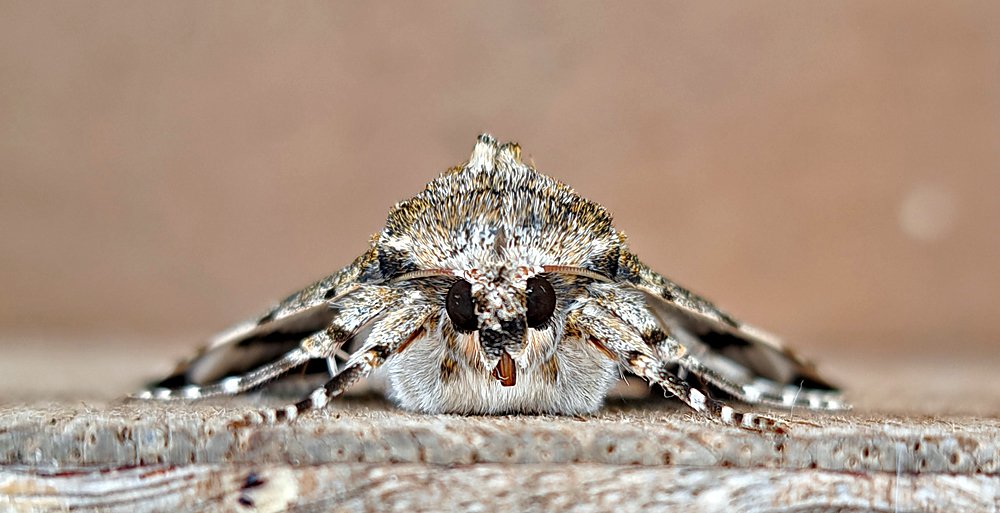Review of 2023
/Rarity-finding was the theme of 2023 as I cannot recall a year when I have found so many good birds myself. Even though I didn’t really have much opportunity to spend long hours in the field, I made the most of the time that I had and, with a good sprinkling of luck, was really satisfied. It’s nice seeing a rare bird, but it’s amazing to find one yourself! The best one was probably the Night Heron which was the first in the island since last century. There wasn’t a huge amount of other rarities to twitch on the island but I was more than pleased to see the brace of Solitary Sandpipers at Rue des Bergers, an almost unbelievable record. A birding trip with the BUBO lads to Spurn was very enjoyable, but was rather low on rare species. However I got my usual British tick with the Forster’s Tern on the way back.
Moth-trapping threw up some nice surprises, with lots of new species for the garden, the best being the very rare Three-humped Prominent. I have been focusing on nights with warm, promising conditions rather than trapping every single opportunity, which has improved my enjoyment I think. Outside the garden, I finally saw my first Guernsey Underwing after all these years of residency, and also found my first Long-tailed Blue. The Coleophora scabrida colony which I discovered new to the British Isles last year seems to be thriving on its tiny patch of foodplant and the identification has now been confirmed by the beards in the UK. And the Tapestry Moths which appeared from the Barn owl pellets were superb. In my general studies of wildlife, I hit a milestone of 3000 species of organism recorded in the British Isles. Wasps and flies were two groups I have been learning about, and covered about a third of the 100 or so new species I saw.
My three top birding moments of 2023:
1) When a small heron flew across in front of me when I sat in the car outside the toilets at Rousse and I jumped out, sprinted down the road, jumped the wall and set eyes on the amazing adult Night Heron just perched up in a tree over the pond.
2) When I stood in the corner of the top deck of the Condor ferry, buffeted by the wind and waves, watching Cory’s and Great Shearwaters gliding past the boat in the evening sun.
3) Racing down to Rue des Bergers in my lunch hour to confirm a rare Solitary Sandpiper and watch it walk right in front of the hide (and then to repeat this exactly a week later for two of them to do the same thing!)
STATS
0 new birds for the World List - still on 805.
2 new birds for Britain (inc. C.Is.) - Forster’s Tern, Solitary Sandpiper - now on 409.
5 new birds for Guernsey - Night Heron, Nightingale, Solitary Sandpiper, Leach’s Petrel, Sabine’s Gull - now on 278.
1 new 'self-found' bird - Night Heron - now on 278.
0 new garden birds (in or from) - still on 98.
2023 Guernsey year list total - well below-average 141.
Official local rarities found - 5 - Corn Bunting, Night Heron, Short-toed Lark, Nightingale, Glaucous Gull.
Official local rarities seen - 12 - above 5, plus Crane, Solitary Sandpiper x2, Sabine’s Gull, Leach’s Petrel, Cory’s Shearwaters, Glossy Ibis, Woodchat Shrike.
Other quality birds found - Red-necked Grebe, Melodious Warbler, Richard’s Pipit
4 new Hommet to Rousse 'patch' birds - Canada Goose, Crane, Corn Bunting, Night Heron - now on 173.
2023 Hommet to Rousse ‘patch’ year list total - 98.
End-of-year British Pan-species list - 3049, (new species during year 103).
End-of-year Guernsey Pan-species list - 2555, (new species during year 72).
Garden moth list - 686
New Lepidoptera in garden - 10 - Pediasia aridella, Eudonia lineola, Diplopseustis perieresalis, Duponchelia fovealis, Acrobasis tumidana, Spiny Hook-tip, Three-humped Prominent, Clouded Buff, Centre-barred Sallow (+ Tuta absoluta ID of specimen from ‘22).
New Lepidoptera in Guernsey - 13 - Guernsey Underwing, Agonopterix umbellana, Trichophaga tapetzella (Tapestry Moth), Argyresthia pygmaeella, Choreutis nemorana (Fig-leaf Skeltoniser), Pediasia aridella, Diplopseustis perieresalis, Duponchelia fovealis, Acrobasis tumidana, Spiny Hook-tip, Three-humped Prominent, Centre-barred Sallow (+ Tuta absoluta ID of specimen from ‘22).
PHOTOS
My favourite 20 photos taken in 2023:
1) January - Dexiosoma caninum specimen
2) March - Grey Plover
3) April - Redstart
4) April - London Docklands
5) April - Titanosaur, Natural History Museum
6) April - Puffin
7) May - Wheatear
8) May - Green Hairstreak
9) May - Green Tiger Beetle
10) May - Tapestry Moth
11) June - Minstrel Bug
12) July - Goldenrod Crab Spider Misumena vatia
13) July - Chloe & Willow
14) August - Coral Necklace
15) September - Solitary Sandpiper
16) September - Clifden Nonpareil
17) September - Grapevine leaf
18) November - Firecrest
19) November - Rainbow, Rousse
20) December - Town Church, The Albion & Xmas lights






































